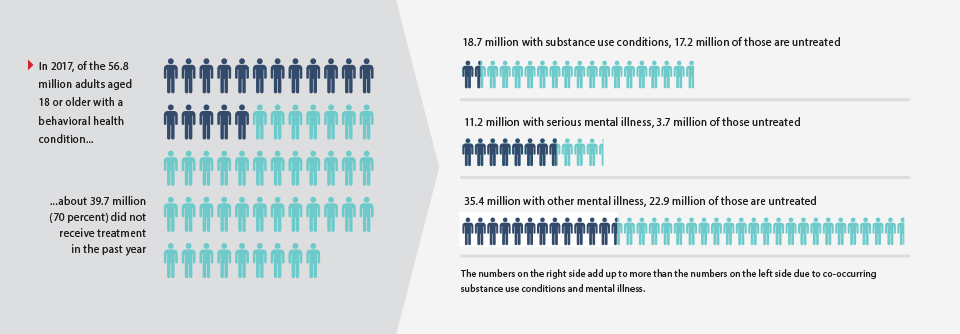Understanding these best practices will help you address an employee’s mental health issues, especially within the stressful lending services industry.
Forward from Jeff Spiegel, first chair of AAPL’s Ethics Committee and principal of Spiegel Accountancy Corp.:
AAPL, as the oldest and largest trade association safeguarding the private lending profession, has a storied history of firsts—one of the most crucial being the establishment of its Code of Ethics. By administering the Code, AAPL ensures our industry remains viable and trusted by borrowers, investors, and partners. It also serves as proof of internal checks and balances to help maintain the industry’s status quo in federal and state legislatures.
AAPL’s Ethics Committee regularly reviews the Code for ongoing clarity and completeness and ensures it does not unnecessarily burden membership with impractical expectations.
Beyond the Code itself, the Ethics Committee provides ongoing best practice guidelines for following the code. The Code and these guidelines are always available to the public at aaplonline.com/ethics.
In this article, we explore one seemingly small aspect of the Code, but one that carries a huge impact: that members not discriminate against any party based on their disability.
The nature of AAPL’s Code of Ethics is that it does a lot with seemingly very little. “Any party” might include borrowers, investors, partners, or employees. And while we may think of disabilities as physical issues we can see, sometimes unseen disabilities are the most debilitating and marginalized.
The Committee and AAPL believe member companies have a duty of care in managing employee issues ethically: both the seen and the unseen. Although the Committee feels confident providing guidance on most aspects of the Code of Ethics, this one had us a bit stumped, so we turned to subject matter expert James Hadlock with Blunovus to discuss how companies can better serve their employees’ mental health, especially within the financial sector.
Read on for his recommendations. If you have questions about this or other elements of AAPL’s Code of Ethics, please email ethics@aaplonline.com.
According to the Centers for Disease Control and Prevention (CDC), approximately one out of five adults in the U.S. has a diagnosable mental illness, and 76% of Americans have reported experiencing at least one symptom of mental illness in the past year.
The financial/lending services industry is not immune. In fact, mental health conditions are more widespread in the financial/lending services industry compared to other sectors. Before the pandemic hit, human resources consultancy AdviserPlus found that 33.9% of absence days in financial services were attributed to mental illness, compared to 22% in utilities and 24% in retail. Lyra Health has published the following findings:
67% of senior decision makers at financial institutions would consider quitting their jobs within the next year if stress levels do not improve.
70% of finance industry workers believe that admitting to suffering from mental health conditions would have negative consequences at work.
Financial services employees are 1.5 times more likely to die by suicide than the national average.
Suffering in Silence
As common as these mental health conditions are, it might be surprising to learn how few people receive treatment. In a 2017 Substance Abuse and Mental Health Services Administration report, of the nearly 57 million adults with a behavioral health condition (substance use or mental health condition), approximately 40 million, or 70%, did not receive treatment in the past year.
Most behavioral health conditions are treatable. So why aren’t we as open to talking about them as we are about physical conditions such as the flu or diabetes? Eight out of 10 workers with a mental health condition say shame and stigma prevent them from seeking mental health care. Stigma and negative stereotypes about mental illness persist both in our society and at work.
Even in the most forward-thinking workplaces, many employees keep their conditions private. They are afraid that opening up about their situation will hurt their status at work, compromise relationships, or put their job at risk. This situation prevents employees from getting better and being productive at work.
The Cost of Mental Illness
Stigma drives silence, but employers must talk about this issue. The mental health of your workforce and your company’s bottom line are intricately linked:
- Mental illness is the single greatest cause of worker disability worldwide.
- 62% of missed workdays can be attributed to mental health conditions.
Sources: Mental Health: A Workforce Crisis,” American Heart Association CEO Roundtable, 2018 and Bad for Business: The Business Case for Overcoming Stigma in the Workplace,” National Alliance on Mental Illness of Massachusetts, 2015.
In “The State of Workplace Mental Health in U.S. 2021,”, a report led by experience management company Qualtrics:
- 50% of employees say they have left a previous role due to mental health reasons.
- 84% report at least one workplace factor negatively impacts their mental health.
- Employees miss an average of eight days of work per year due to mental health.
Mental health conditions such as stress, burnout, anxiety, and depression are prevalent in the workplace, with a large proportion of those costs passed on directly and indirectly to employers.
Spending on mental health treatment and services reached $225 billion in 2019, according to an Open Minds Market Intelligence Report. That number is up 52% since 2009.
How does this impact you? Workplace stress is estimated to cost employers $500 billion annually. In 2018, the American Heart Association estimated that untreated depression expenses alone will cost employers $9,450 per employee, per year, in absenteeism and lost productivity.
Ethically Addressing Mental Health at Work
As an employer, whether your enterprise is large or small, you have a legal obligation to provide a safe work environment for employees. Although it may seem daunting to be supportive without invading an employee’s privacy, handling mental illness in the workplace doesn’t have to be a difficult proposition.
Here are some safe and ethical steps employers can follow in their mental health strategy to ensure better emotional well-being for both management and employees.
Understand Where You Are Today //
It is important to get a good sense of what you are already doing, what employees need, and where you can improve. This can mean providing surveys, talking with staff members often, and reviewing relevant healthcare data.
Reduce Stigma //
With any organization, change starts at the top. Leaders are vital in implementing mental health policies and procedures that influence workplace culture and employee experiences.
Make talking about mental health a priority in your organization. Start with leaders and managers being open about how they have been impacted by behavioral health conditions. It’s not enough to talk about mental health at your company. To reduce stigma, leaders need to be more transparent and authentic about their own experiences. If you have felt stressed or overwhelmed at work, talk about it with your teams. Share with them how you’ve navigated it. It will empower your employees to address their own challenges.
Create a Culture of Connection //
Get to know your people. Invest in creating a culture of connection. Check in on your people regularly to see how they are doing. Understanding their perspective and respecting sensitive issues is vital for a safe and comfortable working environment.
Organizations with diversity and inclusivity are more aware of these issues and less likely to face issues like racism, prejudice, workplace violence, and harassment that lead to depression and related complexities. The working culture should encourage casual interaction among employees, and social activities should be promoted outside the workplace to develop a sense of camaraderie among co-workers.
Seek Education and Training //
Leadership today is no longer just about engagement and results. Leaders are now expected to take on additional responsibilities, including understanding and supporting employee’s mental health, driving diversity and equitable outcomes for all employees at work, and fostering a sense of belonging.
It’s essential to train your managers. Results from the recent 2021 report “The Effects of Employee Burnout” conducted by Gallup along with the “Skillsoft Global Knowledge Report” revealed 98% of managers agree mental health is having a direct impact on their bottom line. Yet less than 32% of those same managers feel equipped to handle the mental health needs of their teams.
Support Employees with Mental Health Conditions //
Take an integrated approach to mental health and develop a plan that provides easy-to-access solutions. Include clear instructions to immediate support and resources along with management and/or staff training around mental illness, work-related stress, discrimination, and bullying/harassment.
Continually improve on your progress by tracking, monitoring, and measuring the effectiveness of your initiatives.
Here are some considerations for managing employees with mental health conditions:
- Have strong policies and procedures—and follow them clearly and fairly.
- Create a quality working environment and provide flexible working arrangements where possible and/or appropriate.
- Ensure your staff is aware of available support and resources.
- Monitor workload at regular intervals; acknowledge the importance of work/life balance by insisting on sound people-management practices.
- Understand the signs and symptoms of mental illness. If an employee discloses a medical condition, ask them about it and have them provide a medical opinion. Seek consent to discuss functional limitations, stressors, prognosis, recovery timeframes, etc. with the company’s general practitioner or medical specialist.
- Address mental health risks and protective factors while ensuring job roles are clear.
- If you carry out performance management or disciplinary action, maintain a clear paper trail of the action you have taken, and make sure it’s consistent in terms of the reason you have carried out the action.
- Do not delay carrying out action. Delay can exacerbate existing mental illnesses. Ask yourself: Would I be treating someone the same way if they did not have this condition but in the same circumstances?
Get Buy-in From Your Employees //
Cooperation is the key to success. Leadership, human resources, and management cannot do much without the cooperation of employees. Your staff and co-workers need to be educated, supported, and interested in having an emotionally healthy workplace, which is why an overall culture of trust and respect is essential. If an employee does encounter a mental health condition, you don’t want them to be afraid to seek support and treatment—or worry about backlash at work.
People Who Feel Better Do Better
Is it your moral and ethical duty to provide mental health support and resources to your employees? Yes. Seeyour employees as people, with hopes, dreams, and challenges. If you invest in their emotional prosperity, you’ll understand that people who feel better simply do better at work and in life.














Leave A Comment